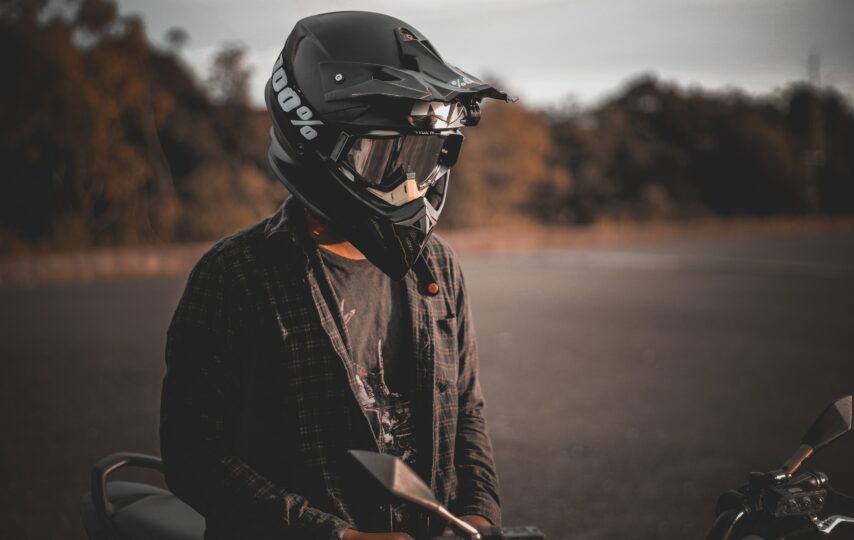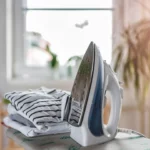Choosing a fitting motorcycle helmet for your riding style, the best approach to use is safety. Therefore, it helps to consider different factors as it is one of the five motorcycle must-haves for safety. In our Deadbeat Custom guide, you will find everything you need to choose the correct helmet to enjoy the open road riding your bike.
The Standards of Motorcycle Helmets
Before you consider the color or style of your helmet, you first need to understand the laws. When buying a helmet for road use, always read the label to ensure it meets ANSI, DOT, BSI, or Snell standards.
Also, ensure the chin strap states E1 and is securely attached while riding. Other essential factors are as follows:
Motorcycle Helmet Style
You can find different styles of bike helmets made for specific riding needs. For example, you can find an open face, full face, dual sport, and a modular half-shelf design.
- Full-face helmets provide maximum safety and remain the best choice. The helmet offers chin protection compared to other styles and is your safest option for general use.
- Half helmets do not offer complete safety, and you find them primarily worn in countries like America and Australia but not permitted in Europe. The reason is it leaves your chin exposed and half of your face when in an accident. But they do provide added ventilation.
- Open-face helmets provide more protection for the ears and the side of the head than half-shell helmets, but they lack chin protection. You also get enough ventilation, but it leaves your chine exposed.
- Modular motorcycle helmets offer you convenience as you flip the face section open. The helmet looks similar to the full-face, but the safety ratings are lower and not made for a professional racer.
- Dual sport helmets you can use for on and off-road riding. It has a face shield; you can wear it with goggles to keep dust out of the eyes.
Then you also have touring helmets for long distances and race helmets designed for the racetrack. So, choose a helmet designed for where you ride the most. Thus, you will choose one offering you comfort, safety, and versatility for commuting. For racing, select a racing helmet as it provides added safety.
Motorcycle Helmet Size
Great, now that you know your helmet style, you must find one that fits. The best you can do is grab a tape measure around the head. Start about 0.79 inches above the eyebrows. Then compare the measurement to the size chart for buying a helmet.
Still, consider the shape of your head split up as long, intermediate, and round oval. Another important thing, where possible, is to try the helmet on to feel if it is a comfortable fit.
Here are some things you must consider trying a motorcycle helmet on:
- Your helmet must not slide onto the head like a hat; if it does, it is too big. Instead use a bit of force to put on a helmet when pulling it over the ears.
- To test the helmet, ask a friend to hold the chin bar and move it side-to-side with your head facing forward. When properly fitted, your helmet should pull on the forehead and cheeks and not slide sideways.
- Next, repeat the process, moving it up and down as it should not pass your eyes.
- To check if the chin pad fits correctly, slide your four fingers into your helmet near the cheeks, as it should not be able to fit in there. Then do the same with the forehead area; it should not slip in there.
- Lastly, secure the chin strap, tilt the head forward, and ask a friend to lift it off the head. Again, the helmet should not roll off.
Added Features
The most important thing when you choose a motorcycle helmet is that it should fit comfortably and securely. But you can find other added features worth the while looking at:
- Advanced ventilation systems are a great option as you control them to keep you cool and help prevent a face shield from fogging.
- While a helmet might come with a standard face shield, it helps to have a backup, and having a tinted one is helpful for riding on sunny days.
- For long-distance riders having a scratch-resistant finish is also worthwhile leaving the helmet’s finish damaged from small stones hitting against it.
- Look for a removable and adjustable lining to wash it as needed.
- A simple feature is a clasp retainer but very helpful as it prevents your goggles from falling off.
- It helps to choose a helmet that has water resistance or is waterproof, as you do not want a leaking helmet.
Final Thoughts
As you can see, there are a few things you need to consider when you choose the right motorcycle helmet for your riding style. After you put in a lot of effort to select a perfect one, you also need to know when you will replace it as well.
Deadbeat Customs recommend if you ever drop your helmet hard, have it replaced. The same applies if you leave the helmet on your car’s backseat, as it can get damaged when rolling around. Also, never leave your helmet hanging on the wing mirror, as it can dent or make it dirty.
The average lifespan of a motorcycle helmet is five years, and if you take good care of it, it will last you a long time.








